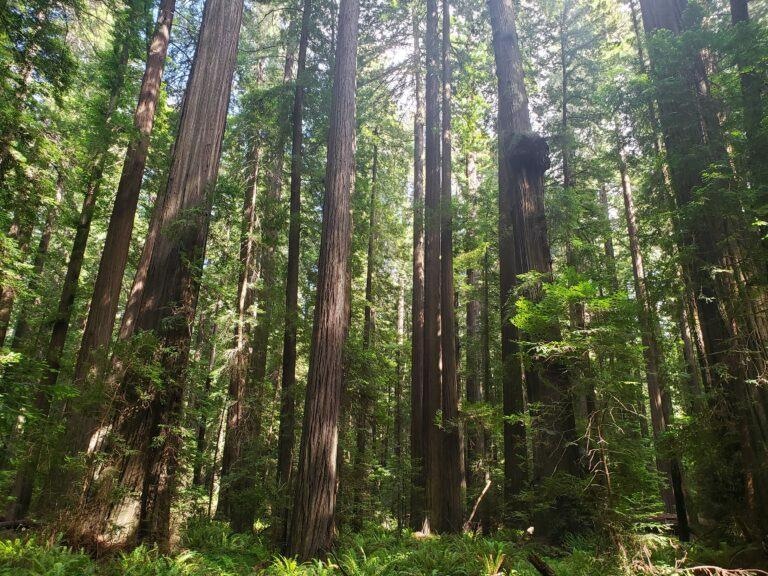Policymakers of California depend in part on shrublands and forests to remove CO2 from the atmosphere to attain the ambitious goal of carbon neutrality by 2045. However, scientists at the University of California, Irvine caution that future climate change might limit the ecosystem’s ability to provide this service.
 Redwood forests such as this one in California’s Humboldt County are key components of the state’s climate change mitigation efforts, but UCI researchers suggest that ongoing greenhouse gas emissions may limit the ability of trees to remove carbon dioxide from the atmosphere. Image Credit: Shane Coffield / UCI.
Redwood forests such as this one in California’s Humboldt County are key components of the state’s climate change mitigation efforts, but UCI researchers suggest that ongoing greenhouse gas emissions may limit the ability of trees to remove carbon dioxide from the atmosphere. Image Credit: Shane Coffield / UCI.
In a research published in the American Geophysical Union journal AGU Advances, the UCI Earth system researchers emphasized that rising temperatures and uncertain precipitation are likely to result in a decrease in California’s natural carbon storage capacity of as much as 16% under extreme climate projection and of nearly 9% under a more moderate scenario.
This work highlights the conundrum that climate change poses to the state of California. We need our forests and other plant-covered areas to provide a ‘natural climate solution’ of removing carbon dioxide from the air, but heat and drought caused by the very problem we’re trying to solve could make it more difficult to achieve our objectives.
Shane Coffield, Study Lead Author and PhD Candidate, Earth System Science, University of California, Irvine
Plants and trees take in CO2 from the atmosphere when they photosynthesize, and some of the carbon gets stored in their biomass or the soil. California’s climate strategy is based in part on enhanced carbon storage to counteract some of the emissions from power generation, transportation, and other sources.
The association of this natural carbon sequestration system and steps to encourage green energy is anticipated to help the state attain its target of not contributing net carbon to the environment by 2045.
However, the UCI scientists put forth the need for an even more aggressive approach to curtail emissions.
The emissions scenario that we follow will have a large effect on the carbon storage potential of our forests. A more moderate emissions scenario in which we convert to more renewable energy sources leads to about half of the ecosystem carbon [sequestration] loss compared to a more extreme emissions scenario.
James Randerson, Study Co-Author, Earth System Science, University of California, Irvine
Randerson also holds the Ralph J. & Carol M. Cicerone Chair in Earth System Science at UCI.
According to Coffield, the present climate models are not in agreement about California’s future precipitation. However, it is possible that the southern part of the state will get drier and the northern part wetter. He further added that the coastal areas of Northern and Central California and low- and mid-elevation mountain areas—places of large offset projects—are more likely to lose some of their carbon sequestration powers over the subsequent decades.
Additionally, scientists could analyze the effects of climate change on particular tree species. They propose that coast redwoods would be constrained to the far northern part of their range by the end of the century and that drier, hotter conditions would favor oak trees at the expense of conifers.
Even when the research employed statistical modeling to have a look into the future of the state’s ecosystems, the study also emphasized the importance of present-day drought and wildfire as key mechanistic factors of carbon sequestration losses.
Research works conducted separately estimated that the 2012–2015 drought killed more than 40% of ponderosa pines in the Sierra Nevada range. Yet another problem described by the scientists is the loss of trees from California’s growing wildfire situation.
We hope that this work will inform land management and climate policies so that steps can be taken to protect existing carbon stocks and tree species in the most climate-vulnerable locations. Effective management of fire risk is essential for limiting carbon [sequestration] losses throughout much of the state.
James Randerson, Study Co-Author, Earth System Science, University of California, Irvine
Journal Reference:
Coffield, S. R., et al. (2021) Climate-Driven Limits to Future Carbon Storage in California’s Wildland Ecosystems. AGU Advances. doi.org/10.1029/2021AV000384.